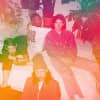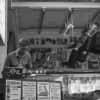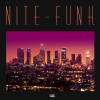Forty-four years ago, a young dental hygienist named Linda Perhacs recorded Parallelograms, an ahead-of-its-time collection of folk songs made for sunny days spent lost in your own head. After decades of existing in relative obscurity, Parallelograms has more recently been reborn as a hugely influential relic of outsider music, particularly to the type of experimental songwriters who mine for inspiration in dust-covered record store crates and covet Perhacs' cosmic pop vibes. Today, Perhacs is returning to the spotlight of sorts with a brand new full-length, The Soul Of All Natural Things, out now via Asthmatic Kitty. Above, watch the hypnotic video for “Prisms Of Glass,” a new song that features Julia Holter and Ramona Gonzalez of Nite Jewel and below, read my interview with Perhacs about love, synesthesia and her plans to make electronic music with Sufjan Stevens.
How did you link up with Julia Holter? The first night I met Julia was at a dublab internet gathering. They asked young acts to come and pick a song [from Parallelograms], and then I did four or five pieces. Julia sang “Delicious” and knocked us all out. I raced backstage to find her, and she was so tiny that she was right in front of me, and I was like “Where is she? Where did she go?” As soon as she said, “I think you’re looking for me, Linda,” I gave her this big hug and I said, “Oh my god, that was beautiful. I have this song that needs 250 harmonies and I saw you using foot pedals and doing all kinds of wonderful things, can we talk?” And that’s the video, that’s the song.
What is the audience typically like at your performances? Every single crowd, since that first [dublab show] has been aged 20 to 40. It’s not a mom and pop audience, it’s artists of every variety — the writers, the musicians, the filmmakers. It’s not necessarily the premiere actors on the front page. They have been my favorite group of people since I was a dental hygienist in Beverly Hills; I was surrounded by Hollywood figures from day one, and my favorite patients were the same kinds of artists, the behind-the-scenes people. I loved them always.
Why do you think your music appeals to those types of people? In the ‘60s and ‘70s, I had a very straight job in Beverly Hills. You did not talk about hippies and what was going on out there [at work]—you could lose your job. When you went to visit the hippy culture you did not bring a camera, it was private. In those days there were two worlds, and I went back and forth between them daily. The reason I was very comfortable with the creative world is because I have synesthesia, or whatever you want to call it, and it’s been manifesting since I was a child. I don’t jam to create a song, I don’t sit at the piano. I hear it and then I run to the keyboard or the guitar and try to capture it. At first it comes through me like rain. That’s why I got along with the hippies so well, they were well-versed in energies. I can’t live there on the pedestrian level, it’s too limited for me.
Why did you take such a long break between recording the two records? Love to a woman is very important. When I was doing the ‘70s album, I became very uncomfortable. My capacity to love was very, very big—you can hear that in the song “Delicious”—and it was too casually handled by men, and that disturbed me. I took the silent years in my life and went on a private spiritual study for a deeper form of love. I took a solitary journey, exploring and reading up everything I could.
Were you tempted to modernize your sound? My song “Intensity” on the new album has a very fast rhythm to it, and there’s a good reason, it’s because Robby [of We Are The World] did the first version and it was in techno. My new producers said "Linda, that’s a great song, but we have to redo it and make it totally organic because your followers are not techno,” so I had to back down. I don’t know why people get in these arguments — Julia uses a mixture of electronic and acoustic and I was mixing electronic sounds on my ‘70s album. I’m going to be a little bit more daring after [The Soul Of All Natural Things]. Sufjan Stevens—we’re going to do some collaborating. He uses both electronic and live instruments, and just look at the beautiful things he comes up with. Creative people don’t have these divisions. We’re just creating.


